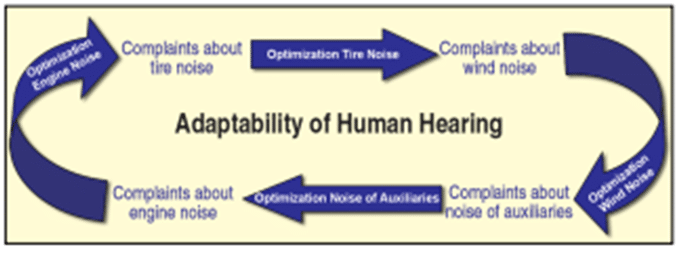Lars Kolind’s Prediction #IV: Independent providers will face tremendous pressures to (become) innovators; team up with innovative manufacturers in strategic alliances; and invest in education/technology to meet demands from consumers who are better informed by means of the Internet.
Last week’s post estimated the networks of manufacturer-owned or allianced retail hearing aid stores. In the US, acquisitions (e.g., HearUSA) and franchising (e.g., Amplifon’s Sonus group) are quickly changing audiologists’ migratory patterns. By one report, the last 7 years have seen independent ownership fall by 23% even as corporate affiliations were growing the total number of retail stores. It’s worth noting that this corporate trend is not out of line with the general economy. Big businesses, not small ones, are creating the vast majority of jobs nowadays. And, as Dr Traynor notes in this week’s Hearing International post, there are new jobs being created in other countries in response to new demands.
Meanwhile, the Big 5 and Audiologists are both being hit by competition from a variety of directions. For instance:
- UnitedHealthCare/hi HealthInnovations jumped in the game with inexpensive hearing aids, a ready-made network of subscribers, but no providers. Now, it’s “…developing a network of audiologists both within the UHC/HI structure (for subscribers) as well as external ‘field staff’ for non-subscribing consumers who need care beyond the online test/device purchase.“{{2}}[[2]]According to an American Academy of Audiology Update on Communications with United Healthcare/hi HealthInnovations.[[2]]More corporate jobs for audiologists, at least for now.{{3}}[[3]]Maybe, but insider speculation is that fast turnover at hiHealthInnovations turns on missing infrastructure and concern that “they don’t know what they were doing.”[[3]]
- Audiologists, especially independents, are the elephant in the room. Why pay for high priced middlewomen when one can automate the system? This is the kind of question inherent in the 2/14/12 patent described in Post #4 for Self Managed Sound Enhancement. The Chinese University of Hong Kong got patent approval in the US for a system that integrates results from a self-administered iPhone test (sensitivity and loudness tolerance) with PSAPs that “automatically capture” sound environments and adjust for the individual’s hearing needs.
Dr. Kolind’s prediction appears to be a slam dunk: the pressure is so great on independents that they are disappearing at a rapid rate, at least in the US. Audiologists are moving toward the shelter of corporate service delivery to ensure survival if not autonomy. The decreasing batch of autonomous outliers remain independent but not ruggedly so. As predicted, most are closely aligned with manufacturers as a means of survival. About the only way they remain independent is when bills are due at the end of the month, leaving little time for innovation. No doubt I am overstating the case. For instance, I am an independent and I do have more autonomy than just bill paying and I’m sure others do as well. On the other hand, I am certain that my practice’s health suffers by my insistence on autonomy and I suspect others might admit some of the same, if they are ruthlessly honest in their practice assessments. Dr. Kolind wins this round for now, I think.
But, the prediction also says that independents have to ramp up their innovation, education, and technology in order to survive. Frankly, I imagine this has always been a true statement, but the order just needs to be fulfilled faster and bigger nowadays. Here’s how Dr. Kolind puts it:
Hearing healthcare providers will also be faced with demands to invest significant amounts in education and technology for their practices… providers will be expected to go through training far beyond today’s 1-day to 2-day seminars in conjunction with new products. … The business will be driven by audiology rather than technology.
That is a tall order and I am not sure it’s consonant with what is going on right now, what with online hearing tests and hearing aid ordering from patients’ own insurance companies. On the other hand, Brian Taylor’s recent post on Concierge Audiology opens a door that Dr. Kolind seems to have built into his futuristic blue print over a decade ago. Dr. Taylor has promised follow-up as this Audiological concept gets fleshed out and I am looking forward to his posts.
In the meantime, I for one am waiting to see where audiology fits into that brave new world. Personally, I hope Dr. Kolind has not struck out on this part of the prediction — he was batting a thousand coming into this inning.
photo courtesy of oilers nation







